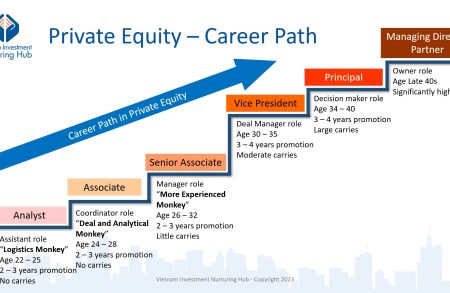Modeling in Layers: The Building blocks of a deal-ready model
In Private Equity (PE) and Investment Banking (IB), whether you’re pitching a PE transaction, valuing a company, or preparing for an investment committee meeting, you need a deal-ready financial model that works like a well-oiled machine. But no one tells you upfront: the best models aren’t built all at once. They are built in layers. Just like architects lay foundations before walls and ceilings, a strong financial model grows step by step—each layer reinforcing the next. This layered approach not only speeds up your work but also makes your model more robust, flexible, and easier to update when necessary. Let’s break it down.
Layer 1: The Historical Core – Getting the Past Right
Every credible model begins with clean, organized historical financials. This means gathering at least 3 years (preferably 5) of Income Statement, Balance Sheet, and Cash Flow Statement data. It would be best if the financial statements are audited by reputable auditors. What you’re doing here:
- Identifying historical performance, trends and their respective root causes.
- Identifying key metrics (margins, growth rates, capex, etc.) driving the performance and trends.
- Normalizing for one-offs (e.g. COVID-era distortions, FX losses, non-recurring income)
❓Why this layer matters: Garbage in, garbage out. Accurate historical analysis form the bedrock of your forward-looking assumptions. They also reveal what’s normal for the business. If you’ve not done this foundation, your model can become a beautiful castle built on the beach sand.
Layer 2: Operational Drivers – Integrate the business to the model
Next comes the driver-based logic—a key differentiator between an amateur excel spreadsheet and a deal-ready model. Instead of plugging in arbitrary revenue or cost growth rates (which can be seen in a lot of amateur financial models), you break things into real-world inputs. To do this, the MECE (Mutually Exclusive – Collectively Exhaustive) principle is very helpful.
For example, to forecast revenue, you may apply: Number of stores × average revenue per store; or Volume × price per unit; or Utilization × capacity × pricing, etc.
For costs, relationship like Headcount × average salary or Cost per delivery × number of deliveries are more convincing than any hardcoded figure.
❓Why this layer matters: In a deal, you’ll be asked What-If questions, like “What if we open 10 more stores?” or “What if wages rise by 5%?” Driver-based models make answering these questions as simple as changing a few inputs.
Layer 3: Financial Statements – Building the Engine
Once assumptions are in place, you forecast the three financial statements (P&L, Balance Sheet, and Cash Flow) for the next 5-10 years. But before building these 3 statements, you may need to construct a number of intermediary sheets. This is where things get dynamic: revenue is linked to and drive Capex, working capital, debt and equity.
At this layer, you will
- Link revenue drivers to gross profit and EBITDA
- Forecast working capital (days receivable, payable, inventory)
- Model capex and depreciation logically
- Roll forward debt and equity accounts
For this step, remember to use formulas that flow top-down. Avoid hardcoding—always trace the flow back to your assumptions.
❓ Why this layer matters: This is the model’s engine. It ensures all the moving parts—growth, margins, investments, financing—come together in a financially coherent story.
Layer 4: Deal Layer – Enter the Private Equity – IB Perspective
This is where things get fun—and deal-specific.
If you’re in Private Equity, this is where you build the deal layer:
- Sources & Uses of funds;
- Deal structure: Equity instrument (valuation, shareholding, rights and obligations, etc.) and debt tranches (amount, interest, repayment schedules, covenants);
- Exit assumptions (e.g. exit multiples EV/EBITDA 10x, 5-year IRR at 3.0x MOIC, etc.).
If you’re in Investment Banking, this may include DCF valuation mechanics; Comparable company & transaction comps; M&A accretion/dilution analysis
❓ Why this layer matters: This section is what differentiate a normal financial model and a PE – IB deal model. It shows how the deal is structured, how value is created, and what the return profile looks like for stakeholders.
Layer 5: Outputs and Dashboards – Tell the Story
No model is complete without clear, digestible outputs. This layer includes:
- Executive Summary;
- Dashboard with Key Metrics: IRR, MOIC, Revenue CAGR, EBITDA margins;
- Sensitivity tables (e.g. IRR vs key drivers);
- Scenario analysis and stress test outcomes;
- Graphs and visuals for board-level decks; etc.
❓ Why this layer matters: This is what your client, partner, or investment committee sees first. A solid dashboard and clear Executive Summary turns your model into a compelling story and effective decision-making tool.
Bonus Layer: Auditing and Formatting
You’re not done until your model is:
- Color-coded (inputs in blue, formulas in black, links in green)
- Error-proofed (no circular references, broken links)
- Print-ready (pagination, frozen panes, clean layout)
❓ Why this matters: In large-sized deals, models are shared, tested, and picked apart. A clean model signals professionalism, attention to detail, and reliability. If your model meets these requirements, you can be proud of it.
In Closing: Think Like a Builder
Whether you’re modeling private equity transaction or a merger deal, always think in layers: Foundation first – Structure second – Deal logic last. This structured approach doesn’t just help you build faster—it helps you build smarter. It creates clarity when the deal gets complex and confidence when you’re presenting to decision-makers.
So next time you build your Excel model, resist the urge to jump straight to financial statements and deal structure. Start with the basics. Build layer by layer. And when it all comes together? That’s when your model becomes more than just a spreadsheet—it becomes a deal-winning tool.
If you found this article helpful and want to learn more about how real-world modeling for PE and IB deals, register for the course on Financial Modeling for Private Equity and Investment Banking (Foundation Level) of Vietnam Investment Nurturing Hub











